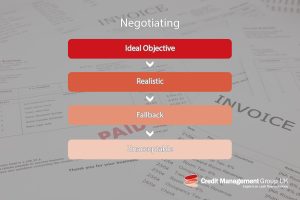February’s Frequent Credit Management Questions

Here are February’s Frequent Credit Management Questions
Why should I be credit checking customers?
Credit checking your current and prospective customers will help you assess the level of a risk a customer poses to your business at that moment. Credit risk report should be considered in detail, taking into consideration aspects such as:
- Adverse information (e.g. CCJs)
- Payment performance
- Net worth
- Fixed assets
- Turnover
- Mortgages
- Directors
If happy that the level of risk a customer has is low enough to work with then great, however putting your customer on credit risk monitoring is essential, as their risk could be excellent one day and pose a significant threat to your business the next.
Find out how our support package can monitor your customers for you.
What is the best strategy for B2B credit control?
The best strategy for B2B credit control will differ depending on the business; every company should adapt a strategy that is suitable for them, taking into account, payment terms, customers types, the industry and resources available. My best advice is to have a written strategy, so all relevant staff are fully aware of the procedures and when actions should be taken. Rather than putting off chasing for payment until cashflow is tight, consistency is key to getting paid on time, as well as building positive customer relationships.
What is the best way to approach negotiating payment from customers?
Having to negotiate for payment from a customer at some stage is inevitable in businesses that offer credit. Negotiating can come as a result of a customer simply not paying on time or that they have a genuine dispute to which they do not want to pay the full amount invoiced.
If your customer is simply not paying (without disputes) then negotiating for payment with leverage is the first step. This could be adding interest to their account, stopping work (as long as you have the provision in your T&Cs), escalating the matter to managers of your customer or indicating that you will pass the matter to a third party.
For negotiating when your customer has a dispute and does not want to pay the full amount, always begin with your ideal amount, that way you have some wiggle room to negotiate down without losing massive amounts (see image below for how negotiating should work).

